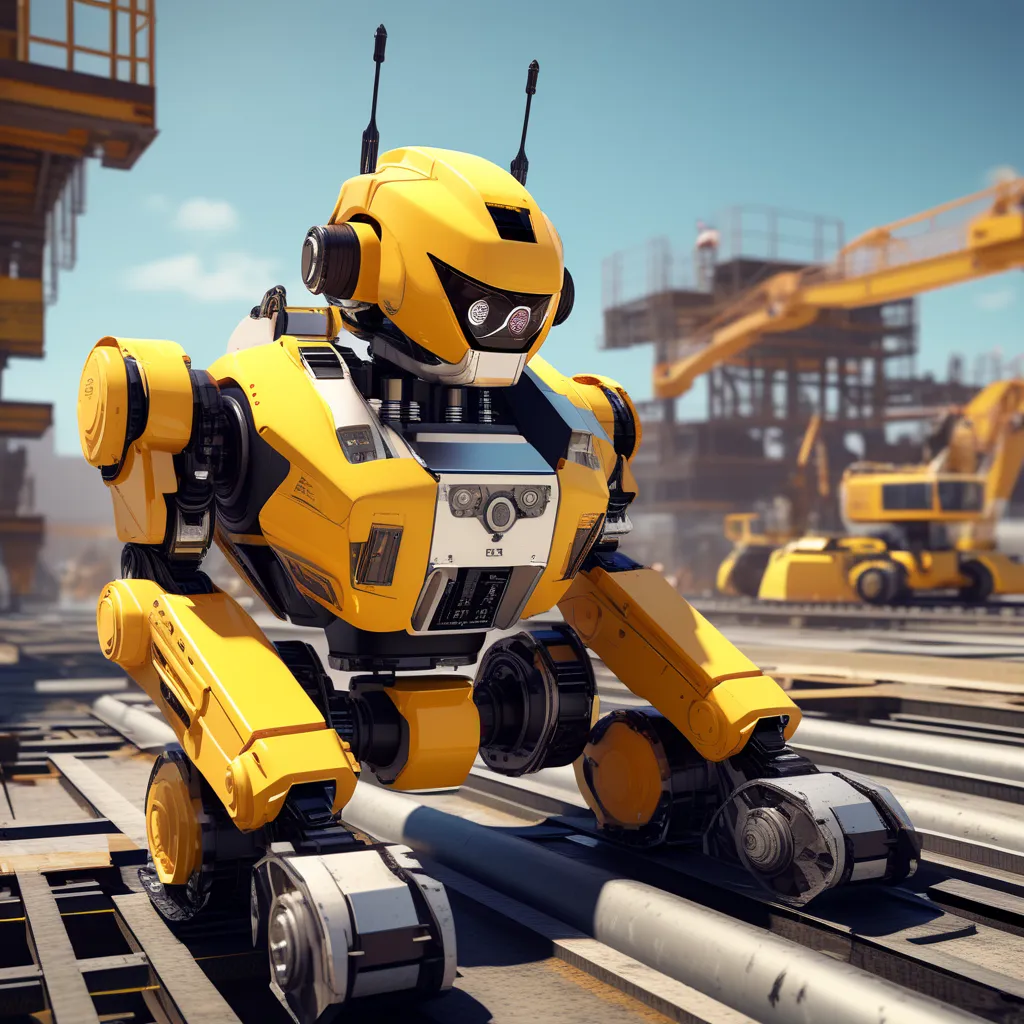AI-Powered Robots Revolutionize Construction Industry
The construction industry, known for its grit and manual labor, is undergoing a remarkable transformation thanks to the integration of AI-powered robots. These cutting-edge machines are reshaping the way we build, making construction sites safer, more efficient, and even more eco-friendly. Let's explore this exciting revolution.

A Personal Glimpse
My Encounter with Construction Robotics
I had the chance to witness this revolution firsthand when I visited a construction site recently. As I stepped onto the grounds, I expected to see a bustling army of workers in hard hats. Instead, I was greeted by a fleet of robots moving with precision and grace. It was like stepping into the future.
The construction supervisor shared with me how these robots had significantly reduced the risk of accidents and improved the overall efficiency of the project. It was clear that AI-powered technology was making a profound impact.
The Rise of Construction Robots
Safety First
Construction has always been a hazardous profession. Accidents, injuries, and even fatalities have plagued the industry. AI-powered robots are changing that. These machines can take on the most dangerous tasks, from heavy lifting to working in extreme conditions. This not only reduces the risk to human workers but also enhances overall safety on construction sites.
Efficiency and Precision
Robots don't tire, and they don't make mistakes due to fatigue. This means they can work around the clock with consistent precision. They excel at repetitive tasks, like bricklaying or pouring concrete, which can be monotonous for human workers. This efficiency translates into shorter construction timelines and reduced costs.
Eco-Friendly Construction
As the world becomes more environmentally conscious, the construction industry is following suit. AI-powered robots are contributing to this shift by reducing waste and energy consumption. They optimize material usage and can even recycle construction debris efficiently. This eco-friendliness is not only good for the planet but also economically sound.
The Human Touch
Collaboration, Not Replacement
While robots are undoubtedly changing the landscape of construction, they are not here to replace human workers. Instead, they complement the skills and expertise of human laborers. For instance, a robot might handle heavy lifting, while a human worker focuses on more intricate tasks that require judgment and creativity.
Upskilling Opportunities
The integration of AI-powered robots presents an opportunity for workers to upskill. Learning to operate and maintain these machines can open new career paths within the industry. It's a chance for construction workers to embrace technology and future-proof their careers.
Challenges and Considerations
As with any technological advancement, there are challenges and considerations to address.
Initial Investment
The cost of acquiring and implementing AI-powered robots can be a barrier for some construction companies. However, many see this as a long-term investment that pays off in increased productivity and safety.
Data Security
AI-powered robots generate vast amounts of data. Ensuring the security and privacy of this data is crucial, especially considering the sensitive nature of construction projects.
The Future of Construction
The integration of AI-powered robots is reshaping the construction industry, making it safer, more efficient, and environmentally friendly. As we move forward, it's essential to strike a balance between automation and human expertise, harnessing the full potential of this technology while preserving the invaluable human touch in construction.
The future of construction is exciting, and it's clear that AI-powered robots will continue to play a pivotal role in shaping it. This is not a replacement of workers but an evolution of the industry, one that holds promise for safer, more efficient, and sustainable construction practices.

No comments:
Post a Comment